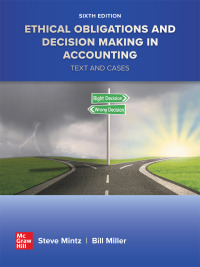Question
This is a real estate accounting closing statement question and I have two scenarios with answers and explanations BUT I don't see HOW the explanations
This is a real estate accounting closing statement question and I have two scenarios with answers and explanations BUT I don't see HOW the explanations make sense when comparing them because I feel like BOTH questions should be done the same way. I don't know why the questions, seemingly phrased the exact same way, are done in two different ways? Are one of these explanations incorrect? What am I missing when reading these two questions that prompts the person calculating it to do these differently? Wouldn't these questions be done exactly the same? If you'd use the same logic in scenario #1 as #2 it seems like the seller should have gotten a credit for $852??? But I have seen this question explained on Chegg in three other places where its always $288. However, if the logic for $288 is correct then why would the logic in SCENARIO 2 be correct as it seems to be doing the exact opposite? Thanks for any help here.
SCENARIO 1
On February 1, a seller paid $1,140 in annual property tax for the current calendar year. He sold the house with the closing set for April 1. What will be the seller's credit for the property taxes already paid if the buyer pays for the day of closing? Use a 360-day year and a 30-day month. Select one:
a. $285 b. $852 c. $288 d. $380
Seller credit for property taxes:
= Total tax (Number of days/360)
= $1,140 (91/360)
= $288
Hence, Credit is $288
You HAVE to add one more day the buyer pays and the seller gets a credit for it when it states
The correct answer is: $288
SCENARIO 2
On January 15, a seller paid $960 in annual property tax for the current calendar year. A buyer is purchasing the house with the closing set for March 1. What will be the seller's credit for the property taxes already paid if the buyer pays for the day of closing? Use a 360-day year and a 30-day month. Select one: a. $840 b. $800 c. $160 d. $120 Feedback The correct answer is: $800
A seller is responsible only for the portion of the tax due for the period he/she owned the house. The remaining portion will be the buyers responsibilty from the closing date.
In THIS case the CURRENT CALENDAR YEAR is January 1 to December 31. The buyer purchased the house (closing date March 1st) The buyer is liable from closing date for tax, so the amount is divided in two parts: Time that seller owner and the time the buyer owned the home.
The question is a 360 day year and 30 day month.
1) Calculate amount seller (Jan-feb) per day = $960/360 = 2.67 per day January to february = 60 days 2.67x60=159.9 or $160
2)Buyer Liability (March 1- December 31) 2.67 x 300 = 799.99 or $800
At closing the buyer reimburses $800 to the seller for advance payment of tax
Step by Step Solution
There are 3 Steps involved in it
Step: 1

Get Instant Access to Expert-Tailored Solutions
See step-by-step solutions with expert insights and AI powered tools for academic success
Step: 2

Step: 3

Ace Your Homework with AI
Get the answers you need in no time with our AI-driven, step-by-step assistance
Get Started


